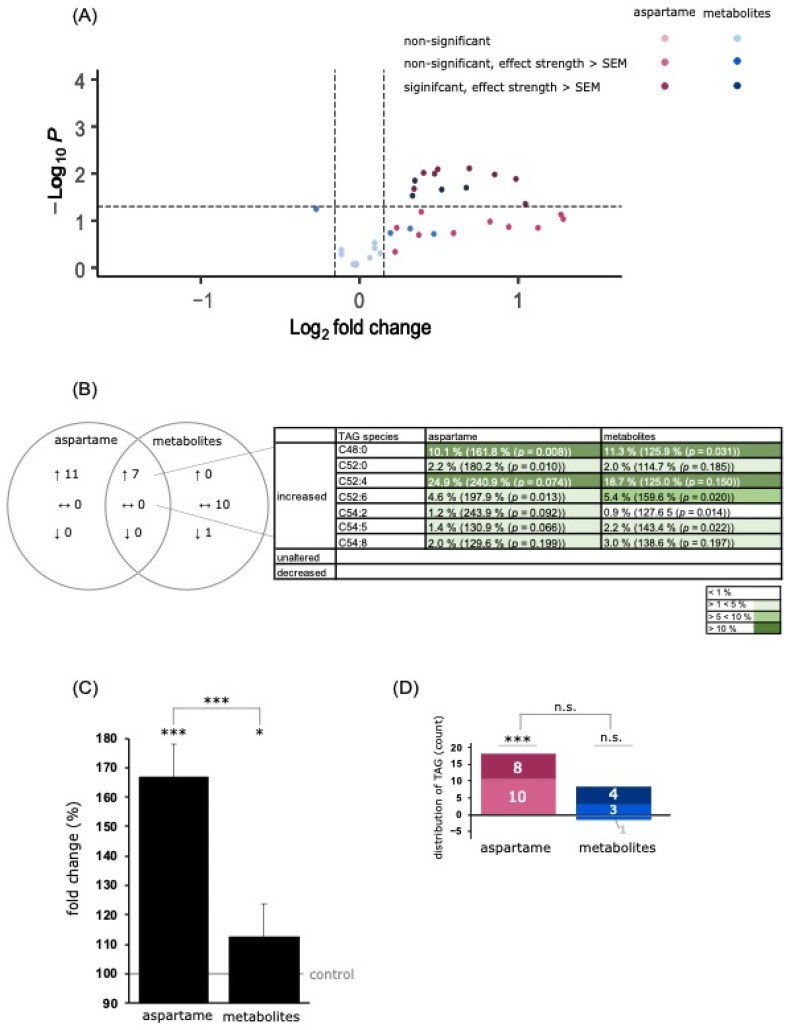Figure 4.
Effects of aspartame or aspartame metabolites on triacylglycerol (TAG) species. Neuroblastoma cells (SH-SY5Y) were treated as described before with control, aspartame, or aspartame metabolites for 48 h and analyzed using a semi-quantitative shotgun lipidomics approach. Each diagram represents the changes in the aspartame- or metabolite-treated cells in comparison to control-treated cells. (A) In the volcano plot, each triglyceride species is graphically represented by a pink (aspartame treatment) or blue (aspartame metabolite treatment) dot which is plotted with its fold change (x-axis) against its according p-value (y-axis). Light blue and light pink dots represent no significant changes. Medium blue and medium pink dots represent a fold change which is greater than the mean standard error of the mean (SEM). Dark blue and dark pink dots represent a fold change which is greater than the mean SEM and in addition has a p-value smaller than 0.05 (which was defined as the statistical significance level). (B) Venn diagram of TAG species after incubation of SH-SY5Y cells with aspartame or aspartame metabolites. Alterations of the same species are visible in the overlapping part. (C) The bar chart shows the relative fold change of all measured TAG species after aspartame treatment compared to treatment with aspartame metabolites. Error bars represent the standard error of the mean (SEM), and the statistical significance was set as * p ≤ 0.05 and *** p ≤ 0.001. (D) Distribution of TAG species, classified by the amount of increased or decreased TAG species. Medium blue and medium pink represent a fold change which is greater than the mean standard error of the mean (SEM). Dark blue and dark pink represent a fold change which is greater than the mean SEM and in addition has a p-value smaller than 0.05. The applied statistical analyses are described in detail in Section 2.9 (n.s. not significant).

